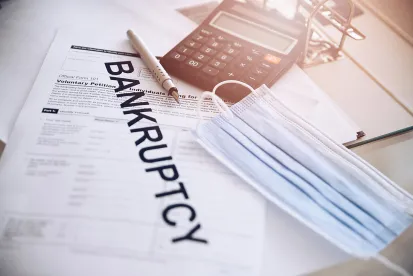Most bankruptcy practitioners are familiar with the intentionally broad scope of discovery under Bankruptcy Rule 2004. However, there are limits to this discovery and the “pending proceeding” rule can be a useful tool to limit the scope of discovery in the appropriate circumstances.
Bankruptcy Rule 2004
Bankruptcy Rule 2004 provides that “the court may order the examination of any entity” and that the scope of such examination “may relate only to the acts, conduct, or property or to the liabilities and financial condition of the Debtor, or to any matter which may affect the administration of the Debtor’s estate or to the Debtor’s right to a discharge.” Bankruptcy Rule 2004(a) and (b).
Examinations conducted pursuant to Rule 2004 have often been characterized as “fishing expeditions” because the scope is far ranging with limited protection for defending parties. Colliers on Bankruptcy §2004.01 (16th Ed. 2019). At least one purpose behind this broad scope is to enable the trustee to discover the nature and extent of the bankruptcy estate. In re Washington Mut., Inc., 408 B.R. 45 (Bank. D. DE. 2009).
However, the use of the Rule 2004 examination is not without limits. Simms v. Deutsche Bank Nat’l Trust Co. (In re. Simms), 2012 Bankr. Lexis 3264 (Bankr. N.D. GA 2012 citing In re Enron, 281 B.R. 836, 840 (Bankr. S.D.N.Y. 2002). “It may not be used for the purpose of abuse or harassment” and it cannot stray into matters which are not relevant to the basic inquiry”. In re Washington Mut., Inc., supra. And it cannot run afoul of the pending proceeding rule.
Pending Proceeding Rule
The pending proceeding rule states that once a separate matter has been commenced (whether in an adversary proceeding, a contested matter, or in a non-bankruptcy forum), discovery should be made pursuant to the discovery rules applicable to the separate proceeding, and not through Rule 2004. In re. Wash. Mut., Inc., 408 B.R. 45, 49-51, supra. This rule has been well recognized by other courts. See, e. g. In re Sanomedics, Inc., 2018 Lexis 2187 (Bankr. S.D. FL 2018); In re Camferdam, 597 B.R. 170 (Bank. N.D. FL 2018) and In re Simms, supra. Discovery of evidence related to the pending proceeding must be accomplished in accordance with the more restrictive provisions contained in the Rules of Civil Procedure governing the separate matter. In re Bennett Funding Group, Inc., 203 B.R. 24, 29 (Bankr. N.D.N.Y. 1996).
The relevant inquiry in applying the pending proceeding rule is “whether the Rule 2004 examination will lead to discovery of evidence related to the pending proceeding or whether the requesting examination seeks to discover evidence unrelated to the pending proceeding.” In re Sanomedics, supra (citing In re Washington Mutual). As one court noted, “[t]he difficult and relevant question is whether Designer Glass' primary purpose in the Rule 2004 examination/production is to further the administration of the bankruptcy case or to aid its pending state court litigation.” In re Ramadan, No. 11-02734-8-SWH, 2012 WL 1230272, at *3 (Bankr. E.D.N.C. Apr. 12, 2012) (emphasis in original).
In some cases, the application of the pending proceeding rule is very clear cut. For example, in In re Cambridge Analytica LLC, 600 B.R. 750 (Bankr S.D.N.Y. 2019) the court denied a plaintiff’s request to misuse its status as a creditor to obtain a Rule 2004 exam. The court found that the movant had paid $650 for a claim against the bankrupt debtor and was then seeking a 2004 examination for use in a derivative action lawsuit in which the debtor was not a party. “The Court would set a very troubling precedent by allowing Movant’s Rule 2004 motion to go forward. Such a result would incentivize parties to purchase nominal claims in bankruptcy cases solely to pursue their outside litigation agendas.” Id.
In other cases, the facts and circumstances may be less clear cut. Invoking its discretion, there are a variety of mechanisms a bankruptcy court can use to control discovery. The court can limit, condition, or even forbid the use of Rule 2004 to prevent abuse where an examination begins to touch upon or be directed exclusively at matters concerning pending litigation. Colliers on Bankruptcy §2004.01, supra. Because application of the pending proceeding rule can often be less than straightforward, see In re Int'l Fibercom, 283 B.R. 290, 292-93 (Bankr. D. Ariz. 2002) (collecting cases in which “pending proceeding” rule was not applied despite existence of related pending litigation),the practitioner will have to evaluate each case and tailor the approach to quashing or otherwise defining the limitations requested on Rule 2004 examinations.




 />i
/>i
